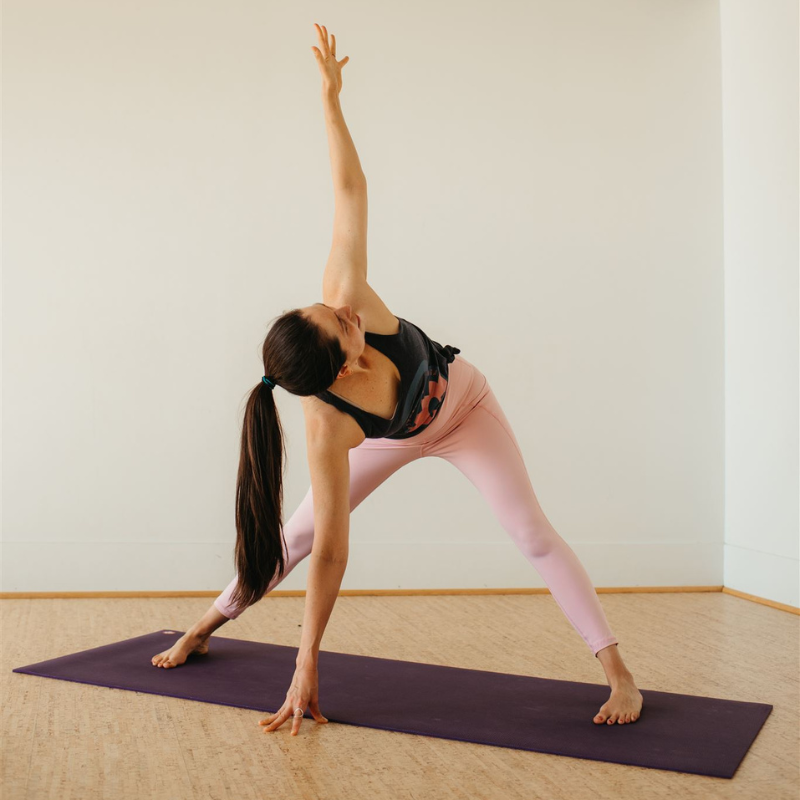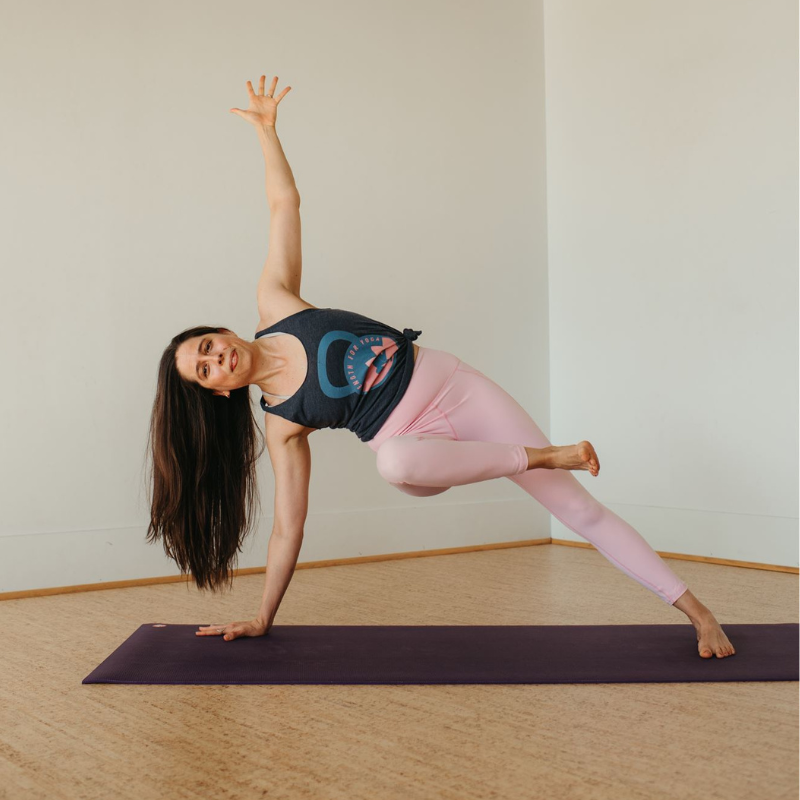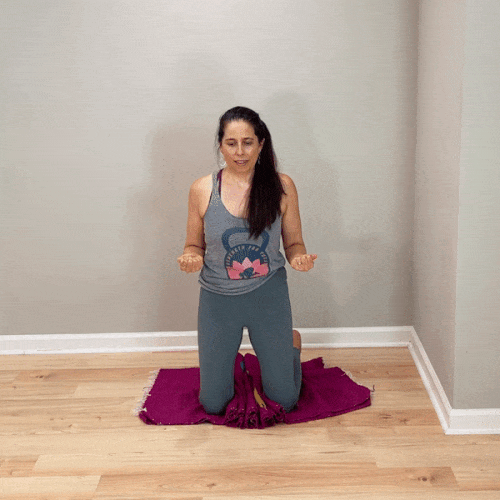How to Strengthen the Adductors in Yoga
This blog post was first sent to Jenni’s email list as an email newsletter. Sign up for the JRY email newsletter here!
Have you ever noticed that we don’t ever really strengthen the adductors (inner thighs) in yoga?
If you think about it, which traditional yoga asanas actually do this in a meaningful way? 🤔
The answer is... none of them!
Sure, there are plenty of yoga poses that stretch the adductors – such as our wide-legged forward fold (prasarita padottanasana) featured in this photo here.
And we also have some yoga poses that do work the adductors to an extent (e.g. warrior 2). But working a muscle isn’t the same thing as strengthening it. Did you know??
To truly strengthen the adductors, we have to:
actively adduct our hips against resistance
work our adductors close to the point of momentary muscular failure, and
progressively overload them over time.
And we have no poses in the traditional yoga lexicon that meet these parameters!
(By the way, this summary of strengthening parameters is abbreviated and simplified. For the full scoop on how strength works, take my body geeky 4-hour Science of Strength 2.0 course!)
Is it bad that we don’t typically strengthen the adductors in yoga?
You might be surprised to hear this, but in my opinion, it’s totally fine for yoga not to significantly strengthen this area of the body. (Can you believe it??)
Yoga doesn’t need to check every box, nor could it if we wanted it to!
In fact, no single physical activity could possibly give our body everything it might want in terms of biomotor skills. You know?
However, it's well-established that strength work is hugely beneficial for our bodies in terms of health, function, and well-being.
In fact, the CDC states that to support physical and mental health, adults need 2 days/week of muscle strengthening activities of all major muscle groups (in addition to 150 minutes of moderate-intensity cardio).
And because the adductors are certainly a major muscle group :), we can clearly benefit a lot from strengthening them.
But what if we’re willing to be creative in our yoga practice?
I mentioned that there were no traditional yoga poses that strengthen the adductors in a meaningful way.
However, we can go out of our way to be creative and bring some variations into our yoga practice that do strengthen these muscles!
With this in mind, here are my three favorite ways to effectively target the adductors within the context of a yoga practice itself (i.e. not a strength training session where we have access to equipment like weights and machines!).
(BTW: In this blog post, I’ll be sharing a quick version of all three moves, and in the video I’ve linked at the bottom of this blog post, I cover these three in much more detail, plus two additional moves I didn’t write about here!)
3 Ways to Strengthen the Adductors (Inner Thighs) In Yoga:
1) Fallen Triangle w/ Leg Hover
In this challenging side plank variation, we hover our bottom leg while keeping our top leg planted on the ground.
This pose targets the adductors (inner thighs) on both the top leg and the bottom leg. It’s a win win all around!
(Reminder: I explain this move in more detail – with more visual demonstrations – in the video at the bottom of this post!)
To make this side plank variation less challenging, we can place our top knee down on the floor.
And to increase the challenge, we can try straightening the hovering leg's knee – wowza!
2) Warrior 2 → Lateral lunges (a.k.a. Skandasana)
In this dynamic move, we start in warrior 2 and then lunge toward the back edge of our mat, bending our back leg's knee as we straighten our front leg's knee.
This lunged position toward the back of our yoga mat is often referred to as “skandasana” in yoga circles.
You could either return directly to warrior 2 after the lateral lunge, or try a few back-and-forth lateral lunges on both sides before returning to warrior 2.
3) Frog Adductor Slides
These adductor slides can be done right within the context of a yoga practice because they utilize only a yoga blanket or towel and a smooth floor to slide on.
We slide our legs away from each other, eccentrically working our inner thigh muscles, and then we hug our legs in toward each other, concentrically working these same muscles.
To make the movement less challenging, we can bring our hands down and practice a hands-and-knees version instead.
Once again, I explain this move in much more depth in my video below!







